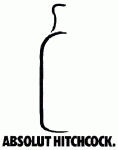Marketing to the Infovore
While the term “infovore” has been kicking around for a while as a cute name for a consumer of information, the University of Southern California’s Irving Biederman is using the term to describe humans exhibiting a more specific kind of behavior: an innate desire for information and learning. Biederman has found that there is a feedback mechanism in the brain that rewards the acquisition of knowledge, and that in essence humans have a “knowledge addiction”. Biederman’s work is described in a release from USC, Grasping the Pleasure Principle, that’s not quite as Kinseyesque as the title might imply:
“I think we’re exquisitely tuned to this as if we’re junkies, second by second.”
Biederman hypothesized that knowledge addiction has strong evolutionary value because mate selection correlates closely with perceived intelligence.
Only more pressing material needs, such as hunger, can suspend the quest for knowledge, he added. The same mechanism is involved in the aesthetic experience, Biederman said, providing a neurological explanation for the pleasure we derive from art. “This account may provide a plausible and very simple mechanism for aesthetic and perceptual and cognitive curiosity.”
Biederman’s theory was inspired by a widely ignored 25-year-old finding that mu-opioid receptors – binding sites for natural opiates – increase in density along the ventral visual pathway, a part of the brain involved in image recognition and processing. The receptors are tightly packed in the areas of the pathway linked to comprehension and interpretation of images, but sparse in areas where visual stimuli first hit the cortex. Biederman’s theory holds that the greater the neural activity in the areas rich in opioid receptors, the greater the pleasure.
Biederman’s work is presented in Perceptual Pleasure and the Brain at American Scientist. He used fMRI scanning techniques to measure the mu-opioid activity caused by different kinds of images. Biederman is quoted in the USC release:
“The system is essentially designed to maximize the rate at which you acquire new but interpretable [understandable] information. Once you have acquired the information, you best spend your time learning something else. There’s this incredible selectivity that we show in real time. Without thinking about it, we pick out experiences that are richly interpretable but novel.”
Biederman’s work focused on the processing of visual information, but he speculates that similar findings would apply to other senses.
Infovore Marketing
What can marketers derive from Biederman’s research? Perhaps the most important finding is that people experience a neurochemical reward when they acquire new information. That “information” doesn’t have to be reading War and Peace or learning the proof for a mathematical theorem – it could be as simple as seeing a new, unfamiliar picture. So, while conventional advertising wisdom suggests that repetition is an essential part of changing customer behavior, Biederman’s work shows that the brain tends to tune out familiar images in favor of novel ones. Hence, advertisers must strike a balance between repeating their message but also providing novel information to trigger the reward circuits in the brain.
 one successful ad campaign that springs to mind as an excellent example of “infovore marketing” is Absolut’s long running print campaign of bottle-shaped images. Long before neuromarketing was conceived, Absolut’s ad people came up with a campaign that provided intriguing, novel images that incorporated the shape of the Absolut bottle. These highly creative images were not only novel, they often contained a bit of humor or playfully incorporated some concept that would take a bit of thought for the viewer to fully connect. From an infovore perspective, one would have to say these images were just about perfect – not only were they novel and unexpected, they frequently produced a little “aha, I get it!” reward to the viewer.
one successful ad campaign that springs to mind as an excellent example of “infovore marketing” is Absolut’s long running print campaign of bottle-shaped images. Long before neuromarketing was conceived, Absolut’s ad people came up with a campaign that provided intriguing, novel images that incorporated the shape of the Absolut bottle. These highly creative images were not only novel, they often contained a bit of humor or playfully incorporated some concept that would take a bit of thought for the viewer to fully connect. From an infovore perspective, one would have to say these images were just about perfect – not only were they novel and unexpected, they frequently produced a little “aha, I get it!” reward to the viewer.
Oddly, after a 25-year run, Absolut dropped the campaign earlier this year. Perhaps even novel and surprising images can get stale and lack punch, but one has to attribute a good portion of Absolut’s sales growth in the eighties and nineties to their ads. These ads not only appealed at a conscious level, but likely stimulated the brain’s reward system as well.


InfoVORE would imply information is somehow “consumed”, like a piece of meat is consumed by a carnivore or vegetation by a herbivore.
It isn’t. Information doesn’t work that way, it’s not like physical property. That’s a Big Lie certain evil InfoFascistic b*****s at places like WIPO like to push. Information learners are not “consumers”. Information is learnt and sometimes forgotten, not produced and consumed.
Blah, would you mind telling us what/who
“WIPO” is? Thanks!
Alan, WIPO would be the World Intellectual Property Organization. From their website: “WIPO is responsible for the promotion of the protection of intellectual property throughout the world through cooperation among States, and for the administration of various multilateral treaties…”
There are some people who don’t believe that intellectual property can be owned. “Information wants to be free,” is a common slogan, often used to justify freely distributing copyrighted works like music.
I think that whole issue is irrelevant to this discussion, which focuses on a human desire to learn. “Infovore” may imply consumption, but that’s splitting semantic hairs.
I agree w/NeuroGuy – the focus is really the reward response triggered by information.
It really supports the “new” marketing practice marketers have always used. I wonder how long it takes for that novelty to wear off and/or what makes some “new” campaigns work and some not? Even though new info might trigger the response, it still seems public response can be fickle in accepting the info.
Still–25 years is a great track record!